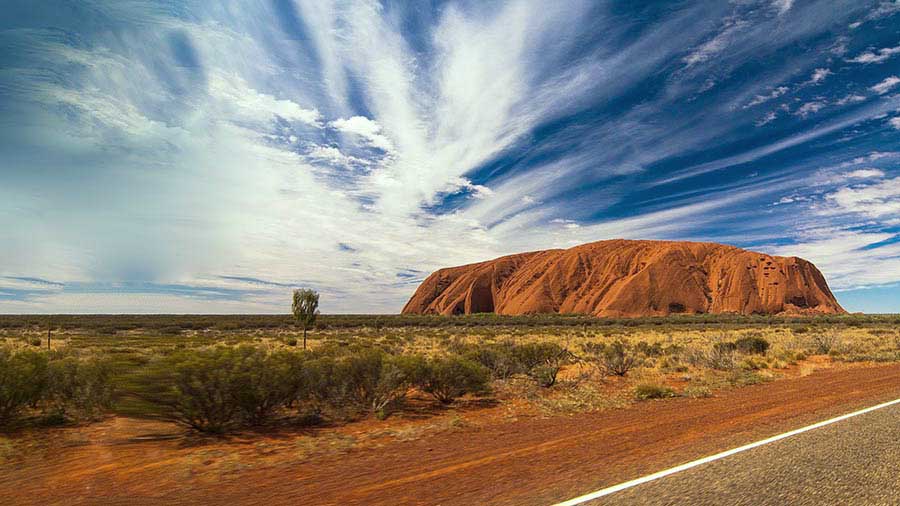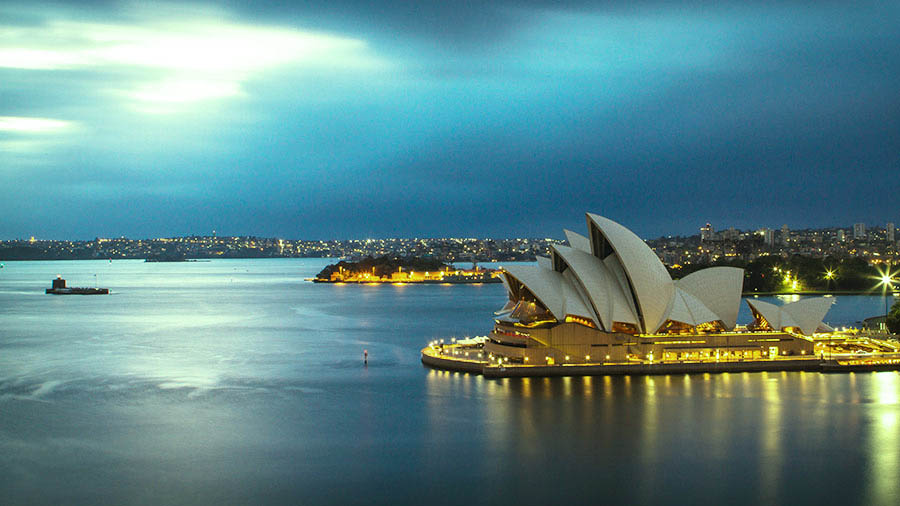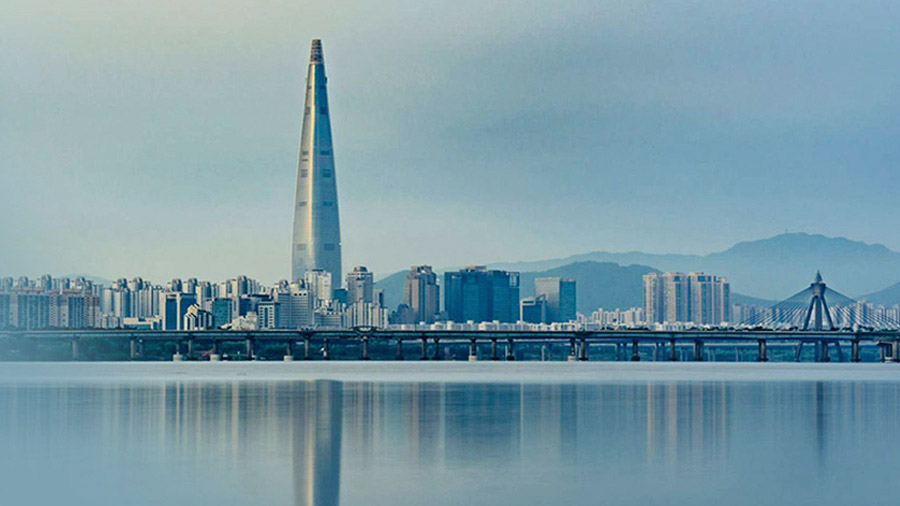Since 1991, India has strived for economic liberalization by implementing an open trade regime. This process has however been tempered by local market considerations, with protective measures erecting direct and indirect market barriers to ensure local players remain competitive.
Currently India has signed free trade agreements (FTAs) with 42 countries, of which 13 are in effect, 16 are under negotiation, and 12 have been proposed. Many of these preferential trade arrangements are with South Asian countries, with whom India seeks to better trade opportunities by reducing import tariffs and simplifying the import license application process. South Asian businesses exporting to India benefit from preferential market access. For example, under the India-SAARC FTA or SAFTA, there is no duty on PVC flooring from Nepal and Bangladesh, although India does not enjoy reciprocal benefits in those countries.
Foreign companies and trading businesses should be able to enjoy easy access to these South Asian markets with India as an operational base, whose own vast market remains under-explored in several segments and regions.
Rohit Kapur, Managing Director of Dezan Shira & Associates India Offices, comments: “India is the economic powerhouse of South Asia. The economies of Nepal, Bangladesh, and Sri Lanka are closely intertwined with that of India. The trade between India and other South Asian countries is increasing, which is advantageous for businesses from Europe, US, Australia to access markets in South Asia from India. This allows them economies of scale. Also, India’s liberal trade policies encourage foreign companies to store goods in Free Trade Warehousing Zones (FTWZs), free of customs duties, till the goods are cleared either for sale in the domestic market or are exported to the neighboring countries. Additionally, South Asian countries can take advantage of the FTAs India enters into with any country.”
India's membership of SAFTA
India and the countries that make up the South Asian Association for Regional Cooperation (SAARC) – Afghanistan, Bangladesh, Bhutan, India, Maldives, Nepal, Pakistan, and Sri Lanka – benefit from several bilateral and multilateral free trade agreements (FTAs). These are the India-Afghanistan Preferential Trade Agreement (PTA), Bangladesh-India-Myanmar-Sri Lanka-Thailand Economic Cooperation (BIMSTEC), India-Bhutan FTA, India-Maldives FTA, India-Pakistan FTA, India Nepal FTA, and India Sri Lanka FTA. Trade between these countries stood at US$31 billion in 2020. Regional multilateral agreements include the South Asian Free Trade Area (SAFTA), SAARC Preferential Trading Arrangement (SAPTA), and the Asia Pacific Trade Agreement (APTA).
Implemented starting July 1, 2006, the South Asian Free Trade Area / SAFTA established a trade agreement between the respective governments of the SAARC member states. SAFTA categorized Bangladesh, Bhutan, Maldives, and Nepal as Least Developed Contracting States (LDCs), and India, Pakistan, and Sri Lanka as Non-Least Developed Contracting States (NLDCs). Based on these categorizations, SAFTA began its phased tariff liberalization program (TPL), wherein all LDCs were expected to bring down their tariffs to 30 percent, and all NLDCs to 20 percent. Both the NDLCs and the LDCs were expected to lower the tariffs to zero to five percent within the next eight and five years, respectively; this was six years for Sri Lanka.
LDCs benefit from smaller sensitive lists in some of the SAFTA members (meaning that they have duty free, quota free/ DFQF access in a larger number of products) and less stringent Rules of Origin (requirement of change of tariff heading and value addition of 10 percent less than the general requirement for non-LDCs; the general rule is 60 percent and there are some product-specific rules).
Only those goods that have undergone a substantial manufacturing process, defined in terms of the twin criteria of a) Change of Tariff Heading (CTH) at four-digit Harmonized Coding System (HS) and b) value content of 30 percent for LDCS and 40 percent for NLDCS – are given preferential market access. Additionally, given their undiversified industrial structure, LDCS are provided with technical assistance in the following areas: capacity building, product certification, data management, institutional upgradation, human resource training, and improvement in legal systems, customs procedures, and trade facilitation.
Some SAARC member countries have also taken bilateral steps to ease the flow of goods, services, and capital between their territories. India Briefing recently discussed such prospects while spotlighting the foreign investment opportunities in Bangladesh and how the country benefits from its proximity with India.
The Rules of Determination of Origin of Goods under the Agreement on South Asian Free Trade Area (SAFTA) can be accessed here via India's Central Board of Indirect Taxes and Customs website: https://www.cbic.gov.in/htdocs-cbec/customs/cs-act/formatted-htmls/cs-safta-rule
India’s bilateral trade relationships with its South Asian neighbors
Afghanistan
In March 2003, the India-Afghanistan Preferential Trade Agreement (PTA) was signed, under which the Indian government allowed substantial duty concessions, ranging from 50 to 100 percent, on certain categories of Afghan dry fruits. Afghanistan has implemented reciprocal concessions on Indian products, including tea, sugar, cement, and pharmaceuticals. In November 2011, India removed basic customs duties for all SAARC LDCs at the SAARC Summit in Male, which gave all Afghanistan exports (except alcohol and tobacco) duty free access to the Indian market.
To overcome land connectivity disruptions caused by neighboring Pakistan, India and Afghanistan have set up an air freight corridor since June 2017. Afghan exports to India through this corridor are mainly high value products like dried raisin, walnut, almond, fig, pine nut, pistachios, dried apricot, and fresh fruits like pomegranate, apple, apricot, cherry, melon, watermelon, medicinal herbs (asafoteida), and saffron. The Air Freight Corridor connects Kabul, Kandahar, and Herat with New Delhi, Mumbai, and Chennai. Chahbahar port located in southeastern Iran, on the Gulf of Oman, is functioning partially and in future will likely boost India-Afghanistan-Iran trade.
In 2019, Afghanistan’s imports from India were valued at US$453.7 million. The imported goods included electrical equipment, sugar, iron, steel, pharmaceuticals, fruits, tobacco, aluminum, and miscellaneous articles of base metals. In 2019, Afghanistan’s exports to India were valued at US$410.14 million. The exported goods included fruits, coffee, tea, spices, vegetables, cereals, lead, and wool.
Afghanistan has established government to government procurement contracts with Indian companies, in areas of pharmaceuticals, medical equipment, IT, and technical services.
Bangladesh
India and Bangladesh have initiated talks on the feasibility of forming a new bilateral FTA with the purpose of strengthening their economic ties; however, this will be preceded by a study on the benefits of forming such a pact. Discussions on matters of regional connectivity initiatives, removal of port restrictions, trade infrastructure etc. have also been held.
As mentioned earlier, the two countries are members of various regional trade agreements, including APTA, SAPTA, and SAFTA, which facilitate concessionary tariff regimes. Under SAFTA, India grants duty free and quota free access to Bangladesh on all items, except alcohol and tobacco. Further, on April 20, 2021, the Indian government approved a Memorandum of Understanding between India’s Director General of Trade Remedies and the Bangladesh Trade and Tariff Commission to increase cooperation in trade remedies.
Indo-Bangladesh border trade passes through Petrapole-Benapole, 80 km from Calcutta, the capital of West Bengal. Some 70 percent of the two-way land trade takes place through this integrated check post.
In 2019, Bangladesh’s imports from India were valued at US$7.91 billion. The imported goods included cotton, mineral fuels, vehicles besides railway and tramway, machinery, organic chemicals, electrical equipment, iron, steel, and plastics. In 2019, Bangladesh’s exports to crossed US$1 billion. The imported goods included textiles, and textile machinery.
Bhutan
The FTA between India and Bhutan came into effect on July 29, 2006, and was to be maintained for a period of 10 years. The Agreement on Trade, Commerce, and Transit was last renewed in 2016, and allows for free trade and commerce between India and Bhutan. The agreement also talks about 21 entry/exit trade points, including 10 trade points with Land Customs Stations (LCS) at the Indo-Bhutan border. Some of these trade points are used by Royal Government of Bhutan for trade with third countries.
While non-tariff restrictions are applied on certain Indian goods to protect Bhutan’s industries, these restrictions are not stricter than those applied on goods originating from third countries. Further, all Bhutanese trade, including imports and exports to and from countries besides India, are not subject to Indian customs duties and trade restrictions. To ensure smooth facilitation of trade in goods between India and Bhutan, consultations between the two countries are held annually.
To enhance the movement of industrial raw materials and goods after the pandemic outbreak, July last year India acceded to Bhutan’s request to open an additional trade route under Jaigaon Land Customs Station. This has been temporarily opened at Ahllay, Pasakha.
In 2018, Bhutan’s imports from India were valued at US$810 million. The imported goods included diesel, wood, charcoal, and gasoline. In 2018, Bhutan’s exports to India were valued at US$433 million. The exported goods included cement, dolomite, cement clinkers, timber, wood products, and fruits.
Maldives
India-Maldives ties have been reset since Ibrahim Mohamed Solih became president in 2018. Maldives is also reconsidering its trade exposure to China under the FTA it has with Beijing. Meanwhile, India-backed infrastructure projects are being implemented in Maldives, and Delhi came forward to assist the country following the COVID-19 outbreak.
In 2020, Maldives’ imports from India were valued at US$196.17 million. The imported goods included pharmaceuticals, cereals, plastics, machinery, vegetables, medical apparatus, electrical equipment, dairy products, and fruits. In 2020, Maldives’ exports to India were valued at US$17.74 million. The exported goods included ships, boats, iron, steel, medical apparatus, machinery, aluminum, copper, electrical equipment, mineral fuels, and vehicles besides railway and tramway.
Nepal
According to their bilateral FTA signed March 6, 2005, India and Nepal exempt the application of customs duties and quantitative restrictions on each other’s imports of primary goods, as decided mutually. To aid Nepal’s industrial development, India’s imports of its industrial products will benefit from preferential treatment. The India-Nepal FTA is to be continually extended for a period of five years at a time, unless either country hands in a written notice three months in advance, with the intention to terminate the agreement.
In 2020, Nepal’s imports from India were valued at US$782 million. The imported goods included oil, gold, iron, steel, clothing, pharmaceuticals, cement, electrical equipment, food items, and vehicles. In 2020, Nepal exported iron, steel, textiles, plastics, knotted carpets, and vegetables to India.
Pakistan
As per the India-Pakistan FTA, Pakistan currently maintains a Positive List of Importable Items from India, inclusive of a total of 1,075 items. Some of these items are live animals, vegetables, pulses, coffee, tea, spices, mineral products, fuel gas, metals, chemicals, homeopathic medicines, rubber, wood, etc. On the other hand, some of India’s imports from Pakistan do not have any customs duties levied on them, such as passenger bus spares, fuel, and consumables for the passenger bus.
In 2020, Pakistan’s imports from India were valued at US$242 million. The imported goods included organic chemicals, inorganic chemicals, pharmaceuticals, machinery, plastics, ships, boats, and medical apparatus. In 2020, Pakistan’s exports to India were valued at US$1.6 million. The exported goods included organic chemicals, machinery, wool, fruits, lead, medical apparatus, and apparel.
Sri Lanka
Commercial relations between Sri Lanka and India marked a milestone when the two countries signed the India-Sri Lanka Free Trade Agreement (ISFTA) on December 28, 1998, a first such agreement for Colombo. The ISFTA entered into force March 1, 2000. The ISFTA is now in full implementation as both sides have completed their phasing out commitments under the respective Tariff Liberalization Programs (TLP).
India-Sri Lanka Free Trade Agreement
Products of Sri Lankan origin exported to India under ISFTA are duty free at present, except the following categories:
1) Products of India’s Negative Lists – 429 tariff lines
2) Products of India’s Tariff Rate Quota (TRQ) Lists as follows:
- For garments – eight million pieces at zero duty
- Tea: 15,000 MT at 50 percent margin of preference (MoP)
- Pepper: 2,500 MT at zero duty
- Desiccated coconut: 500 MT at 30 percent MoP
- Vanaspati, bakery shortening, and margarine: 250,000 MT at zero duty
- Textile: 528 tariff lines at 25 percent MoP
The products of Indian origin exported to Sri Lanka under ISFTA are duty free at present, except the products of:
- 1,180 tariff lines included in the Negative List of Sri Lanka under ISFTA.
Rules of Origin (ROOs) criteria for export products, which are not wholly obtained or products in Sri Lanka (with imported inputs):
- Minimum Domestic Value Addition (DVA) – 35 percent of FOB price
- With inputs from India – minimum DVA in Sri Lanka is 25 percent of FOB price and the Aggregate Value Addition (Sri Lanka+ India) should be at least 35 percent of FOB price
- Change of Tariff Heading (CTH) at HS 4-Digit Level
- Sufficient working or processing in Sri Lanka
- The final manufacturing process should take place in Sri Lanka
- Direct consignment
In 2020, Sri Lanka’s imports from India were valued at US$3 billion. The imported goods included pharmaceuticals, sugar, cotton, mineral fuels, iron, steel, machinery, coffee, tea, spices, and vehicles besides railway and tramway. In 2020, Sri Lanka’s exports to India were valued at US$654 million. The exported goods included mineral fuels, coffee, tea, spices, fruits, apparel, electrical equipment, furniture, and wood.
|
Exports (US$ million) |
Imports (US$ million) |
|||||
|
Year |
Total exports to India |
Exports under ISFTA |
% under ISFTA |
Total imports from India |
Imports under ISFTA |
% under ISFTA |
|
2000 |
55.65 |
8.6 |
16 |
600 |
53.9 |
9 |
|
2001 |
70.12 |
15.9 |
23 |
601 |
113.1 |
19 |
|
2002 |
168.81 |
114.2 |
68 |
834 |
81.7 |
10 |
|
2003 |
241.14 |
238.8 |
99 |
1076 |
150.4 |
14 |
|
2004 |
385.49 |
339.9 |
88 |
1342 |
394.7 |
29 |
|
2005 |
559.21 |
543.0 |
97 |
1,399.43 |
246.2 |
18 |
|
2006 |
494.06 |
431.1 |
87 |
1,822.07 |
459.3 |
25 |
|
2007 |
516.4 |
398.2 |
77 |
2,785.04 |
385.3 |
14 |
|
2008 |
418.08 |
309.3 |
74 |
3,006.93 |
541.4 |
18 |
|
2009 |
324.87 |
218.5 |
67 |
1,709.93 |
371.7 |
22 |
|
2010 |
466.60 |
358.4 |
77 |
2,546.23 |
573.7 |
23 |
|
2011 |
521.59 |
391.5 |
75 |
4,349.43 |
579.6 |
13 |
|
2012 |
566.37 |
379.5 |
67 |
3,517.23 |
156.4 |
4 |
|
2013 |
543.37 |
368.8 |
65 |
3,092.67 |
393.4 |
13 |
|
2014 |
624.81 |
375.8 |
60 |
3,977.76 |
540.1 |
14 |
|
2015 |
643.03 |
407.28 |
63 |
4,273.30 |
253.3 |
6 |
|
2016 |
551.20 |
375.25 |
68 |
3,827.50 |
186.7 |
5 |
|
2017
|
689.48
|
442.29
|
64
|
4,495.99
|
257.04
|
6
|
|
2018
|
768.71
|
483.48
|
63
|
4,158.18
|
246.87
|
6
|
|
2019
|
759.37
|
489.89
|
64
|
3,830.82
|
198.74
|
5
|
Source: Sri Lanka Customs and Department of Commerce









